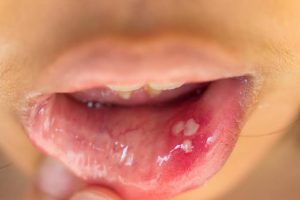HPV which stands for Human Papiloma Virus is a viral infection and it is the most common sexually transmitted infection that is passed between people through skin-to-skin contact. It is a different virus than HIV and HSV (herpes). HPV is common among sexually active people. Over 100 types of Human Papiloma Virus are known and more than 40 types are transmitted through sexual contact and infect the anus and genitals.
CAUSES
In most cases, HPV goes away on its own and does not cause any health problems. But when it does not go away, it causes health problems like cancer and genital warts. Different types of HPV infection cause warts on different parts of the body. For example, some types of HPV infection cause hands and feet warts, while others cause warts that mostly appear on the face or neck. Sexually transmitted HPV is divided into 2 categories: low-risk and high-risk. Low risk HPVs causes mucous membrane growths (warts) on or around the genitals. High-risk HPV cause cancer and consist of about a dozen identified types like type 16 and 18 which is responsible for causing most HPV-caused cancers.
However, HPV infection occurs when the virus enters the body, usually through a cut, abrasion or small tear in your skin. HPV is contracted through sexual intercourse, anal sex, and other skin-to-skin contact in the genital region. Some HPV infections that result in oral or upper respiratory lesions are contracted through oral sex. Large genital warts can block the birth canal, complicating vaginal delivery.
SYMPTOMS
HPV infection is asymptomatic, mostly common in childhood and typically appears and regresses spontaneously over the course of weeks to months. Although, human immune system fights HPV infection before it causes warts. When warts appear, they vary in appearance depending on which variety of HPV is involved.
Common warts- these are usually found in
the hands and feet , it can also occur in other areas of the body like the elbows or knees.
Plantar warts – this type of wart appear on the heels or balls of the feet. It is hard and grainy.
Genital warts – this is the common sexually transmitted HPV infection of the skin. It is associated with genital or anal warts (medically known as condylomata acuminate or venereal warts). It appear as flat lesions small cauliflower-like bumps or tiny sterm-like protrusions. In men, genital warts appear mostly on the penis and scrotum or around the anus. In women, it appear mostly on the vulva but can also appear on the cervix, vagina and near the anus. It causes discomfort and it is quite contagious, while common flat and plantar warts are much less likely to spread from person to person.
Flat warts – this type of wart appear everywhere, but children usually get them on the face. Women tend to get them on the legs and men tend to get them in the beard area. They are flat-topped, slightly raised lesions darker than the skin.
RISK FACTORS
Risk factors for HPV infection include;
Damaged skin – cut on a particular area of the skin are more prone to develop common warts.
Personal contact – touching surfaces that have been exposed to HPV eg public showers or swimming pools.
Multiple sexual partners – sexual active people with multiple sexual partners are more likely to contract a genital HPV infection.
Age – genital warts occur mostly in the adolescents and young adults. Common warts occur mostly in children.
Low immune system – people who have weakened immune system are at greater risk for HPV infections.
PREVENTION
Plantar warts – wear shoes or sandals in public locker rooms and pools to reduce the risk of contracting HPV .
Common warts – though, it is hard to prevent the HPV infections that cause common warts, you can stop the wart function if you already had a common warts by not biting your nails or picking at a wart.
Genital warts – Reduce the number of sex partners, using protective means (latex condom) to reduce your risk of developing genital warts.
DIAGNOSIS
If genital warts aren’t visible, the doctor will perform one or more of the following medical techniques.
DNA test – this is done to verify the varieties of HPV that have linked to genital cancers.
Pap test – A sample of the cells collected from the vagina or cervix for lab urinalysis.
Acetic acid solution is applied to infeccted genital area to help in identifying difficult-to-see-flat lesions.
TREATMENT
Warts often go away on its own without treatment, especially in children. However, some medications is used in treating warts because it do reappear and some don’t go away on its own . the treatment to eliminate warts are typically applied directly to the lesion amd it takes many applications before they are successfully removed. Some of this medications include; salicyclic acid, imiquimod, trichloroacetic acid.
However, if the warts are not removed through medication, the doctor may suggest removing the warts through surgical removal, laser surgery etc.



